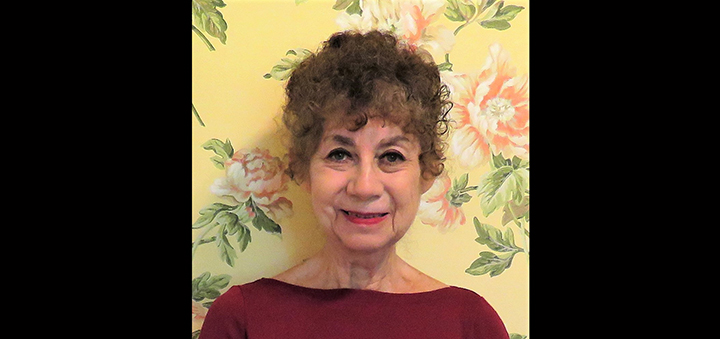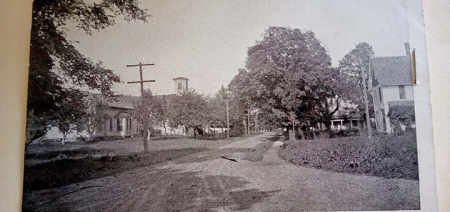Tilting At Windmills: The Case Of The Bad Carpenter
Published:
February 4th, 2022
By:
Shelly Reuben

There I was, partnered with my late husband at Charles G. King Associates, our fire investigation company. Vastly less knowledgeable and less experienced than Charlie, but being sent into a burned bungalow in a town I’ll call Littlefield, New Jersey.
“You do this one,” he said, stepping back and pointing toward the partially incinerated house.
Charlie was cutting the cord.
So, camera in hand, I reviewed what I knew about what I had to do.
Step One. Walk around the outside of the structure and make observations.
I could do that.
Starting from the sidewalk, I noted a one-story residence with a minuscule front yard, surrounded on all four sides by a waist-high cyclone fence. As I began to study the exterior, I saw sooty windows on the glassed-in front porch, boarded up windows on the other three sides, and debris (chairs, tables, TV sets, lamps) that had been thrown on the lawn during firefighting operations. I did not perceive a lot of damage to the exterior walls or roof until after I had circled around the back of the house and arrived at the driveway.
As I moved forward, I saw that about mid-way along the south wall, the siding was severely burned, and a path of fire extended up to the roof. I moved closer, knelt, and discovered a hole scorched in the clapboard about a foot above the ground that seemed to have burned to or from the inside of the house.
Hovering beside me, Charlie said, “Okay. Now go inside. You’re on your own, but I won’t be far behind.”
Step Two. I went inside.
In the tried and true manner of all fire investigators, I moved from the area of least burning – porch, hallway, living room, master bedroom, and kitchen – to the area of the worst burning, the children’s bedroom, where the burning had been so intense that fire completely consumed the partition wall, leaving only the studs to show where the living room ended and the bedroom began. The wall studs were not burned below midline, indicating that the fire had burned upward and outward from somewhere inside the children’s bedroom, but not at floor level.
Charlie gave me a nudge.
The room was small, but big enough to accommodate a chest of drawers and an (almost completely incinerated) bunk bed.
The family that owned the house consisted of Jacob Farrow, his wife Debby, and their six-year old twins, Jenny and Penny. The Farrows had bought the bungalow two years earlier, and the previous owner held the mortgage.
A claims rep for one of our insurance company clients, Nick Diesel, asked Charlie to look into what he called “a very suspicious fire.” So far, Nick told us, it had been investigated by the chief of the fire department, the local police investigator, and the county arson squad. All agreed that the fire had been incendiary, and that – because of certain “Red Flags” they’d been taught to look for – it was set by Jacob Farrow, the homeowner himself.
What were these Red Flags?
Too many to mention here, but the ones that seemed to point to our policyholder were:
He had removed his dog from the premises before the fire.
He had removed most of the clothing from the closets.
His vehicle was not in his driveway.
He was unemployed.
His wife and children were away from the house.
He had been seen leaving the premises half-an-hour before the fire was discovered.
He was an ex-con.
It didn’t seem to matter to any of the other investigators that Jacob Farrow had good reasons for all of the circumstances that made him look suspicious: his dog was at the veterinarian; the closets were half-empty because clothes were at the Laundromat prior to the family leaving on a vacation; his wife had their car, and had driven the children to visit her mother; he was working off the books for his brother-in-law, and…
What did being an ex-con have to do with it?
As Charlie had told me, emphatically and often, “Even felons have accidental fires.”
So we weren’t interested in Red Flags. We were there for one reason and one reason only. To look for burn patterns. Fire burns up and out. It imparts information about where it started and how it traveled in the char and debris that it leaves behind.
As fire investigators, it was our job to “read” burn patterns and to learn from them what they could tell us.
First we moved the remnants of the bunk bed away from the wall. Unlike all of the other walls inside the Farrow house, the one behind the children’s bed was severely burned. All of the burning on that wall was low. Not at floor level, where an arsonist would have poured flammable liquid, but beginning about a foot above the baseboard on either side of an electric outlet, and from there burning horizontally to the rest of the wall, and vertically through the ceiling to the roof.
When we were outside in the driveway, it was in this area that we observed the hole scorched through the clapboard into the children’s bedroom, on the other side of the wall.
There, and only there – behind Jenny’s and Penny’s bunk bed – was the origin of the fire.
It had started in one of two “bays” (bays are the areas between wall studs), where Jacob Farrow, who did all the repair work in the house himself, had driven a nail through the paneling. The nail had pierced an electric wire inside the wall. Over time, the insulation around the wire deteriorated, a short circuit had occurred when the nail touched the hot wires, and “whoosh” … a fire ensued.
When I showed Charlie what I had found and told him what I deduced, he beamed at me.
I had gotten it right!
Our Littlefield, New Jersey “arsonist,” it turned out, was not a fire setter at all. He was just a magnet for bad luck. After we explained the fire to the Powers that Be – we could show them exactly where the nail had pierced the wire – no charges were brought against Jacob Farrow, and his insurance claim was paid.
Most important for me, though, was the lesson that I learned about Red Flags.
Unlike real evidence (see it; touch it; smell it; hear it; taste it), Red Flags are indicators, and indicators, like wind socks and weather vanes, can blow this way or that.
A burn pattern, however, is a diary written in char of what actually occurred.
Because of those burn patterns, we were able to prove that a guy with a criminal record, under suspicious circumstances, turned out to be a good father and husband, kind to his dog and his mother-in-law, up-to-date on his mortgage, and gainfully employed.
He was also, however, a very bad carpenter.
Copyright © Shelly Reuben, 2022. Shelly Reuben’s books have been nominated for Edgar, Prometheus, and Falcon awards. For more about her writing, visit www.shellyreuben.com
Author: Shelly Reuben - More From This Author
Comments










